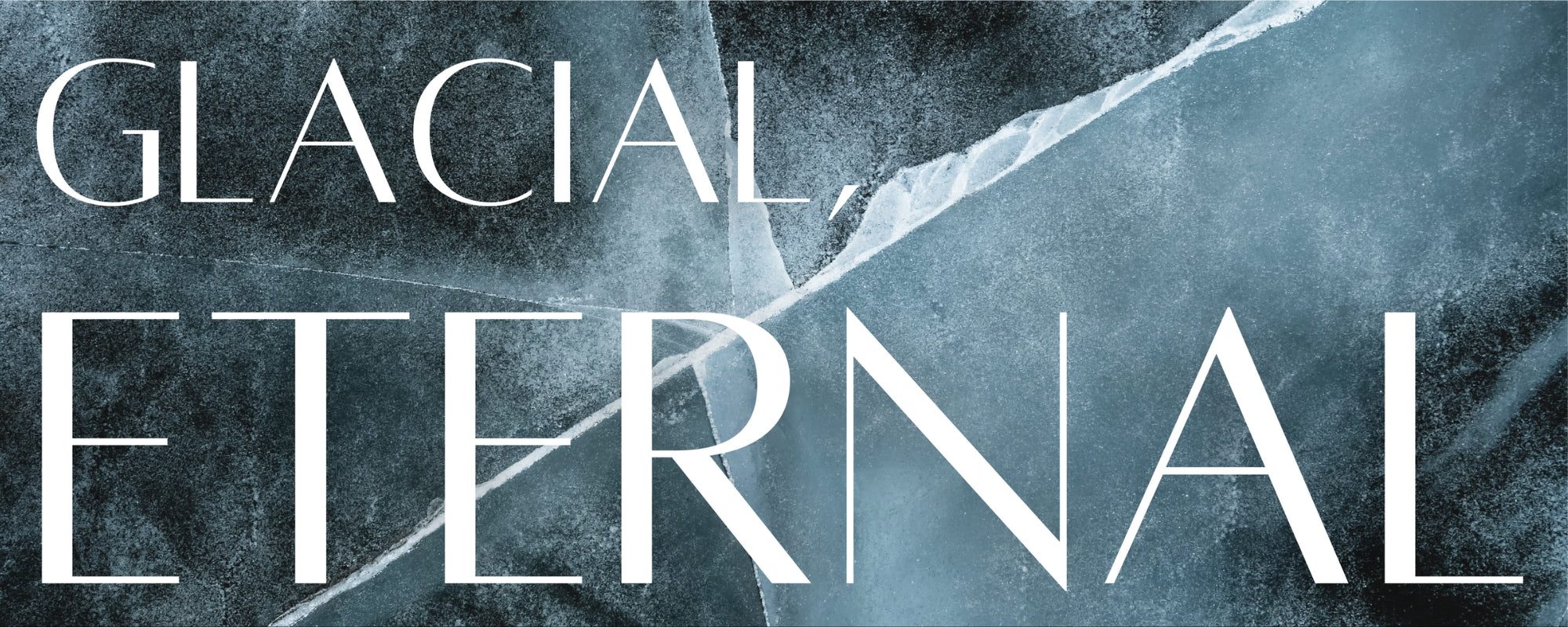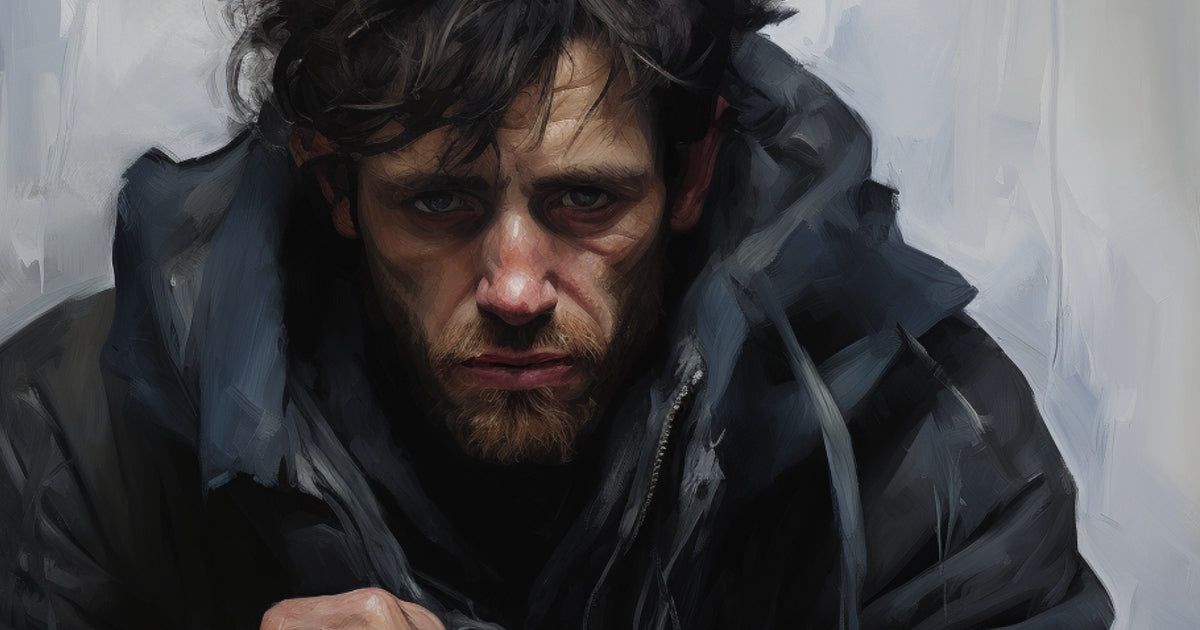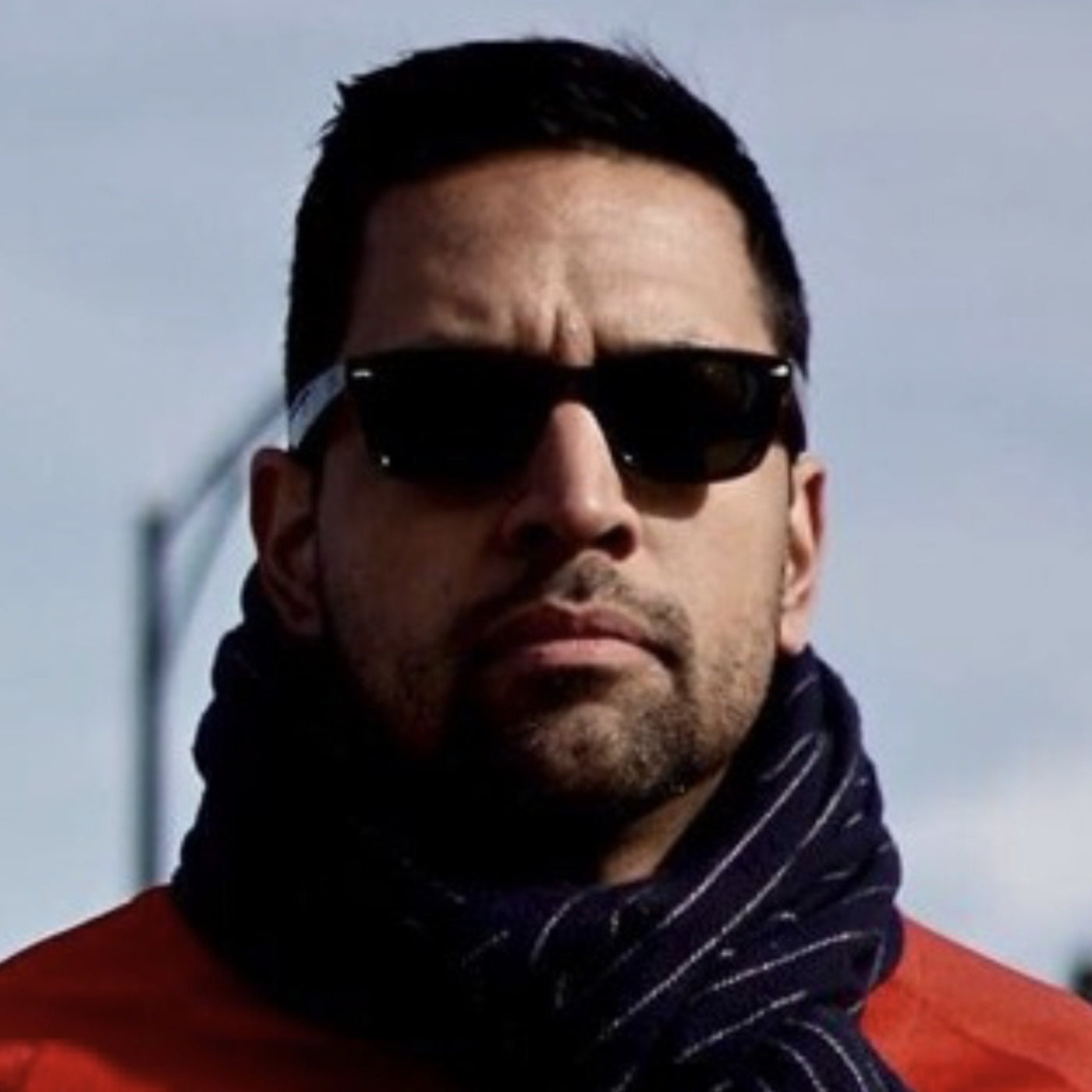

Glacial, Eternal
By Aleco Julius
It all began with a mysterious find. In the summer of 2019, a small team of underwater archaeologists from the University of Chicago was traversing the waters of Lake Michigan in search of both a lost shipwreck and cultural artifacts. They were looking for the SS Neptune—which had foundered during a storm in the 1840s—and were gathering samples of the lakebed for multidisciplinary study. Half of the six-person team was made up of graduate students, led by Department of Archaeology Professor, Mills Knox.
They were working in partnership with the Midwest Prehistory Society, so anthropologist Dr. Cassandra Luna was invited on board. She had recently published her book The World of Cahokia, about the great prehistoric city of the Mississippian people, and thus her knowledge of the region and its history was invaluable. Things had gone smoothly over the first few days, though the ominous third day of the project proved difficult to explain.
Professor Knox’s previous success in locating wrecks of both seafaring vessels and aircraft earned his team the funding to acquire state-of-the-art sonar equipment and remote submarine vehicles. He had published his most recent find in The Journal of Inland Seas, in which he detailed his location of the two-masted schooner Dusk, which sank in Lake Huron during the Great Gale of 1913. In fact, the August 4, 2019 edition of the Muskegon Register ran a short article about the new shipwreck project. Dr. Luna was interviewed, in which she said, “This is an exciting opportunity. It’s always a privilege to be able to explore the lakebed, where clues are sometimes found of the past cultures and peoples who lived there before the lakes as we know them.”
On the morning of Wednesday, August 6, Professor Knox and Dr. Luna launched their sixty-foot dive boat from the 59th Street docks near campus. With them were the pilot, Lenny Johns, who was also an experienced Lake Michigan boater, and three graduate students: Kiara Bellfield, April Albati, and Lazaro Toribio. The day was productive, with several vials of lakebed samples recovered from forty feet below. The three graduate students made good use of the rigorous diving program they had completed earlier that summer. There was no sign, however, of the steamship for which they had been searching.
The second day it stormed. In the late morning, the distant thunder rumbled lazily across the water from the west. The surface was altered from tranquil azure to turbulent gray. No luck with wreckage, but they had an hour’s diving time before the tempest arrived. Hurrying back to land, the team was excited to go into the lab for inspection of the first two days’ collections. They had unearthed the broken shells of zebra mussels, fish bones, and rocks of various types among the silt. Half a year later, Bellfield told the Chicago Reader, “It was pretty standard stuff, at first. But then Laz found the one that changed everything.”
After a few hours of examining samples, Bellfield and Albati decided to go for a late lunch at a nearby noodle shop. They stood up from their microscope stations and crossed the room toward Toribio. Luna was entering data on her computer while Knox packed up some papers for a meeting on another floor of the building. No one had yet noticed the strange body language of Lazaro Toribio. As the women approached him, he was as still as a transfixed statue, holding a stone about the size of a large fist in his hands. Albati recalled, “I guess that was the first sign, but at the time we didn’t think anything of it. We had to call his name out a few times to get his attention, so we thought he was tired, or maybe hungry or something.” Bellfield concurred: “He looked tired or sick. You know, come to think of it, after all that happened the next day…he looked a little scared.”
At that point, Professor Knox took his leave for the meeting and told them all he would head home afterward and see them at the docks early the next day. Dr. Luna turned her attention to the grad students. On episode twelve of the Curious Phenomena podcast, recorded in 2021, she described her meeting with what we now call the Heart Stone: “It sounds silly for me to say this about a rock, but there’s no other way to explain it. It was like a negotiation, a source that was new to me. Not just to me as an individual, but to something. Something deeper.” She goes on to elaborate how she felt her breath quicken and her hands tremble. “Was it nausea?” She shrugged. “It was probably just the heat of the lab and the humidity outside.” The average daytime temperature of the first two days was eighty-eight degrees Fahrenheit, ninety-three with the heat index.
Toribio snapped out of his stupor, waving off any concerns that he was not okay. The three grad students called it a day and walked to their eating spot. But Dr. Luna stayed behind, enraptured by the odd stone. At a glance, she noticed discolored markings on the dull, silver-colored specimen. Taking a closer look, they appeared to be petroglyphs of some kind, but they were nothing like anything she had come across in her extensive research. The overlapping ellipses seemed too patternlike to have occurred randomly. On the podcast, she states, “To my knowledge, they were unknown, especially amid the region of the Great Lakes. I decided to take a fresh look in the morning. But that feeling of vertigo didn’t totally go away.”
When the crew convened at eight o’clock the next morning by the docks, the heat was already stifling. The students held their duffel bags of equipment in one hand, cold brew coffees in the other. Lenny Johns, the pilot, was preparing the boat for launch, checking off in his head all the safety and readiness measures he had performed a thousand times before. Albati and Bellfield remembered the moments before embarkation on their third day of exploration. Albati recalled, “We planned on getting out on the lake early to beat the heat, but it was already hot as hell. Laz was quieter than normal, but he insisted to me and Kiara that he was fine.”
Off to the side, Dr. Luna was explaining the bizarre stone to Professor Knox, who was intently nodding along as she spoke. Knox was initially incredulous, but trusted the expertise of Luna, and they both agreed to examine it together that afternoon. As for Johns, he noticed that something was different. On the Discovery YouTube channel documentary segment about the Heart Stone event and its subsequent consequences, he affirmed, “It just didn’t feel right, but I suppose it was the heat and humidity messing with my head. I suggested that they postpone until another day, but they wouldn’t hear of it. We had plenty of drinking water on board, and the lake was pretty calm, so I can’t blame them for what happened.”
The first dive of the day was to be made by Dr. Luna, Bellfield, and Toribio. Johns cut the engine of the boat about five hundred yards out, where the steamship supposedly went down. Sonar work detected nothing but low ridges and commonplace sandbars beneath the waves. Dr. Luna was more eager to detect signs of prehistoric human life than sunken wrecks, and looked forward to gathering ample material for study. So, they donned their scuba gear and splashed into the water with tools in hand. After twenty-five minutes, Dr. Luna gave the signal to ascend. It wasn’t until they climbed back aboard the dive boat, however, that they realized Toribio wasn’t with them. It was immediately concerning, as the dangers of lake diving can strike during the most routine of situations.
“Well, of course. Before I took my gear off, I went right back in,” recalled Dr. Luna. “I had plenty more oxygen in the tank, and plus, Laz’s behavior from the previous day cropped up in my mind. Maybe he’d passed out or something.” But there was no sign of Lazaro Toribio. It was at that moment, within the tenebrous depths of the lake, that she felt the indistinct grip of the Heart Stone and vaguely recognized its dread import.
She resurfaced minutes later. Lenny Johns started up the boat, ready to circle the area. In the ensuing days, a report by the Consortium for Lake Michigan Water Safety concluded that there should have been no rip currents in the area of their sampling, which was the original conviction of both Johns and Knox. As the boat began to move, there was an abrupt breach in the surface, accompanied by a loud gasp. Toribio had appeared to the relief of all, looking quite pale. Although a good swimmer, he struggled to stay afloat. Bellfield described the scene: “Laz was shaking, not swimming. Like, violently shaking. When they pulled him up out of the water, I could see the crystals on his mask.”
Knox took Toribio in his arms. “He was in shock, and I was in shock. I couldn’t believe it. He was ice cold and shivering like a hypothermic despite the relatively warm water and the excessive heat that day. It didn’t make any sense.” In the Discovery video, Johns spoke from his boat out on the lake. “We were right about here. When that kid came out of the water, it may just as well have been the damn Arctic Circle.”
As his fellow grad students wrapped him up with towels, Dr. Luna sensed a shift in the atmosphere, a prickling sensation like that of an impending storm, or the awesome, terrifying indifference of the open sea. Johns swung the boat toward shore and shifted into high gear. Dr. Luna was phoning paramedics to meet them at the docks when Toribio spoke. “Why—Why did you leave me down there for so long?” After a collective hesitation, Professor Knox said, “We’re sorry, Laz. But did you get turned around down there? How did you end up getting lost?” To which Toribio replied, “You left me there all night.” His teeth continued to chatter, but his breathing stabilized a bit and a touch of color returned to his face.
Back on land, there was a perceptible dissolution of the young man that had been Lazaro Toribio. He did not respond to questions and was reticent toward the rest of the team. He allowed the paramedics, who had been waiting at the docks, to examine him. They did in fact diagnose him with hypothermia, which brought on a volley of unanswerable questions. One of the emergency medical technicians, Ava Thomas, wrote the following in Mitchell Hospital’s official report, dated August 8, 2019: “Expected to treat for water ingestion and near drowning. Symptoms of Hypothermia? Shivering, disorientation, memory loss. Skin on face and extremities exhibit possible frostbite. Refused ambulance.”
Toribio abruptly left toward his dorm room, about a fifteen-minute walk. The team desperately attempted to reason with him, but to no avail. His drowsy stupor was similar to the previous day’s, Dr. Luna thought. “And what did he mean that we left him in the lake overnight? If he blacked out, how did he survive?” These words are from the Chicago Reader story published in the spring of 2020, called “The Heart Stone Enigma.” Later that afternoon, Bellfield and Albati stopped by Toribio’s dorm room. They knocked and called his phone, but there was no response. The boundless force at lake’s bottom had already taken its hold.
Dr. Luna spent the evening of the third fateful day examining the Heart Stone with Professor Knox. Both were unnerved and somewhat vertiginous with bafflement. According to Dr. Luna, it could not be categorized as an artifact of indigenous peoples. Careful scrutiny of the elliptical markings revealed faded dotting and an embedded, veined network design. Knox felt as though he were “holding a piece of fruit, or an egg, not a stone. There were characteristics of organic material, but at the same time, it reacted to tests as though it were a mineral.” After the incident, the exploration project was canceled, and the mysterious stone was stored in the lab.
While both scientists were well-seasoned in the realm of rocks, they called upon geologist Antony Eliad. In an article published in the Fall 2021 issue of North American Geology, he is quoted as saying, “Never seen anything like it. My first instinct was that it was chondrite. I’ve examined many meteorites in my career, but my studies of this particular stone were inconclusive. It was fascinating. Exhilarating, even. Like it had an invisible pulse.” Additional testing by the group determined that the stone was billions of years old, far older than typical Great Lakes rocks, whose average years of age are merely in the hundreds of millions.
Lazaro Toribio did not take classes that fall. He became distant to his family and ignored friends and mentors at the university. Knox told the Reader, “It’s a shame, because he was a brilliant student and a good guy besides. I made my efforts to reach him, like we all did, but no.” Because he still paid tuition, room and board, and was a student in good standing, he was allowed to stay in his small 59th Street dorm apartment. “He did go to the libraries, though,” said Bellfield. “I didn’t see it myself, but that was the rumor. All through the fall, he was like a ghost making his way around campus. Very early in some of the cafeterias, and very late at the mini-marts, where he bought up hordes of food.”
His library account records were made available to internal investigators, who in the end made no headway in determining an explanation for what happened in January 2020, soon after the Heart Stone went missing. Among the books Toribio checked out were Edmond Miller’s The Glacial Great Lakes, Liana M. Cortina’s Cognition Rethought, and Jaxson Oquendo’s The Phenomenology of Anatomy. Assuredly, he was searching for meaning in his profound experience. Records show that he also purchased occult books online. Two of the volumes he bought from Watkins Books in London were Fr. Silvester Panizante’s sixteenth-century treatise Daemonologia Frigus, and The Grimoire of Sea and Sand by Laurentia Beaumont.
Toribio was the chief suspect when the Heart Stone disappeared from the archeology laboratory just after the new year. As it turned out, of course, the suspicions proved correct. “Someone was pounding on my door,” remembers Bellfield. “So, I open it, and he’s standing there with his backpack. I FaceTimed April right away.” Toribio appeared especially gaunt. His clothing was rumpled, and he had dark circles under his eyes.
Because it was Saturday night, January 4, Albati was staying at her parents’ house in the western suburbs. Their class meetings had not yet resumed for the new year, meaning hardly anyone was around. This provided Toribio advantageous conditions to steal the stone. Since he still had his lab keys, there were no obstacles.
Bellfield had the wherewithal to use a recording app while the three grad students were on the video call, conversing together for the first time since the day Toribio had emerged from the water, sick with hypothermic chill. The recording was eventually obtained by university security.
What follows is an overview of that call.
Toribio: I’ve been unwell.
Albati: We just want to help you, Laz. Talk to us.
Toribio: I know I haven’t been myself.
There is a pause.
Toribio: When I was down there, underwater, I encountered a being. It was a thing, a monstrous thing, an entity I believe, something incredibly old, with incredible knowledge. I didn’t know this when it happened, but it’s something I’ve thought a lot about. Haven’t thought about anything else at all, actually. You know how it is down there. The enveloping semidarkness and the dappled light. Frightening, but at the same time sort of—sort of spiritual.
Both Albati and Bellfield’s facial expressions conveyed a mixture of worry and fear.
Bellfield: What do you mean? We’re worried about you.
Albati: What did it look like?
Toribio: It—It was the color of opaque ice, and it emerged from the rippling shadows at the bottom of the lake. There were markings slashed all around it, with impurities here and there that resembled frozen deposits of mud and sand. And it was huge. Maybe about the size of a truck. Just a massive chunk of glacier. When it came for me, the water turned so cold. I could feel its presence, and through my mask, the weak light from the surface showed me its jagged shape.”
Albati and Bellfield are silent for a moment, so Toribio goes on.
Toribio: It spoke to me. I heard its voice in my head. Not sure how to describe it, because there weren’t any words, just ideas and concepts and images. I know what it wants.
Bellfield: Look, Laz, I’m so glad you came to me- to us- but we should go to someone who can—
Toribio cut her off: It wants this.
He slings his backpack around to his chest, zips it open, and extracts the Heart Stone. The women gasp.
Toribio: And I must take it back. Every day, at least once a day, I see in my mind’s eye the dim, silent nadir of the lake. Staggering images of eldritch vistas, when glaciers ruled the continents for eons. I could feel the tension of our desires, our feeble grasping at knowledges lost to the depths of time, and the wild indifference of the ice.
Bellfield: Who are you right now?
Toribio: This agency, see, has always existed within the vast mountainous floes. Vital energies of terrestrial transformation. Before humans, and before the seas themselves. What I hold here in my hands is the ancient heart of the lakes.
Albati: But how did this all happen in a just a few minutes?
Toribio: To me it felt like day, a single revolution. The ice revealed to me how time moves for all matter and consciousness. Immeasurable gulfs for us are but fleeting moments for the agency within the ice.
Bellfield: This thing, this monster, tried to kill you. Don’t you see that?
Toribio: No. It was the irresistible violence of extreme form. And so, my individuality was annihilated. With the gradual warmth of the lake, the heart stone was unlocked from the ice, where it had been positioned for immense durations, and released into the waters. Now it knows.
Albati: Knows what, Laz?
Toribio: Our time is up.
There is a flash of understanding in the faces of the women, the subtlest hint of the unthinkable.
The video ends as Toribio walks out without another word. Bellfield later reported that she “Tried to stop him, but it was completely pointless. It was like he was possessed.” The only others she could trust to know the situation were Dr. Luna and Professor Knox, but by the time she reached them, Toribio must have been at the shoreline, frigid waves lapping at his feet on the gravelly sand in the darkness.
As soon as the students informed Dr. Luna of their call with Toribio, she intuited his mission. He would return to the frozen depths, to heed the beckoning call of cruel indifference. The entity would await his return in its obscure, cold lair, itself a solid anatomical mass of beguiling architecture.
That fall, Dr. Luna dug deep into the archaeological and geological literature, researching the symbols on the Heart Stone and looking for clues of similar cases, but only found oblique references and unreliable anecdotes. She came across old myths and folklore that told of demons and magical creatures living among the icy crags near the poles. Antiquarian manuscripts that extolled the demiurgic soul of the iceberg. The book From Stone to Star by Claude Allegre offered intimations that the petroglyphs were a mode of writing, perhaps instructions of some kind. She also consulted renown cryptographer Olga Richtor, who suggested that the stone was a map. To Dr. Luna, that result was incomprehensible.
By the end of winter 2020, a report was completed by the Great Lakes Region Team at the National Weather Service. Compiling all the evidence, they concluded that an “ice water anomaly” was responsible for Toribio’s hypothermia, and that the brain damage he must have sustained from it contributed to his delusions.
Lazaro Toribio was not seen again. A recovery mission by the Chicago Metropolitan Water Rescue lasted three days, but amounted to nothing. Professor Knox lobbied to award a posthumous PhD in Archaeology to Toribio, which was received by his grieving family.
Eventually, Dr. Luna put some pieces of the puzzle together. She published her own article, “Student of the Waters,” in the Winter 2022 issue of the magazine Esoteric Sciences.
This is an excerpt of her piece:
The voice of the ice was the voice of our foregone doom. And the paradox of our ephemeral lives, when weighed against the continental forces, is an apprehension both crushing and sublime. Through this submerged entity, this supposed anomaly, Lazaro glimpsed these magnitudes. He carried the burden of a knowledge that, in the end, was apparently too great to bear. He ached to return the Heart Stone to the murky depths, though it is my guess that his final act was in vain.
I imagine him stepping off the rocky beach and into the coaxing, black waves with an exalted feeling in his gut. Relieved to engage the glacial deity. Knowing that he would forever be a part of the eternal lake.
Copyright © 2023 Aleco Julius
The Author

Aleco Julius
Continue reading

Get Issue Updates
Promotions, new products and sales. Directly to your inbox.



